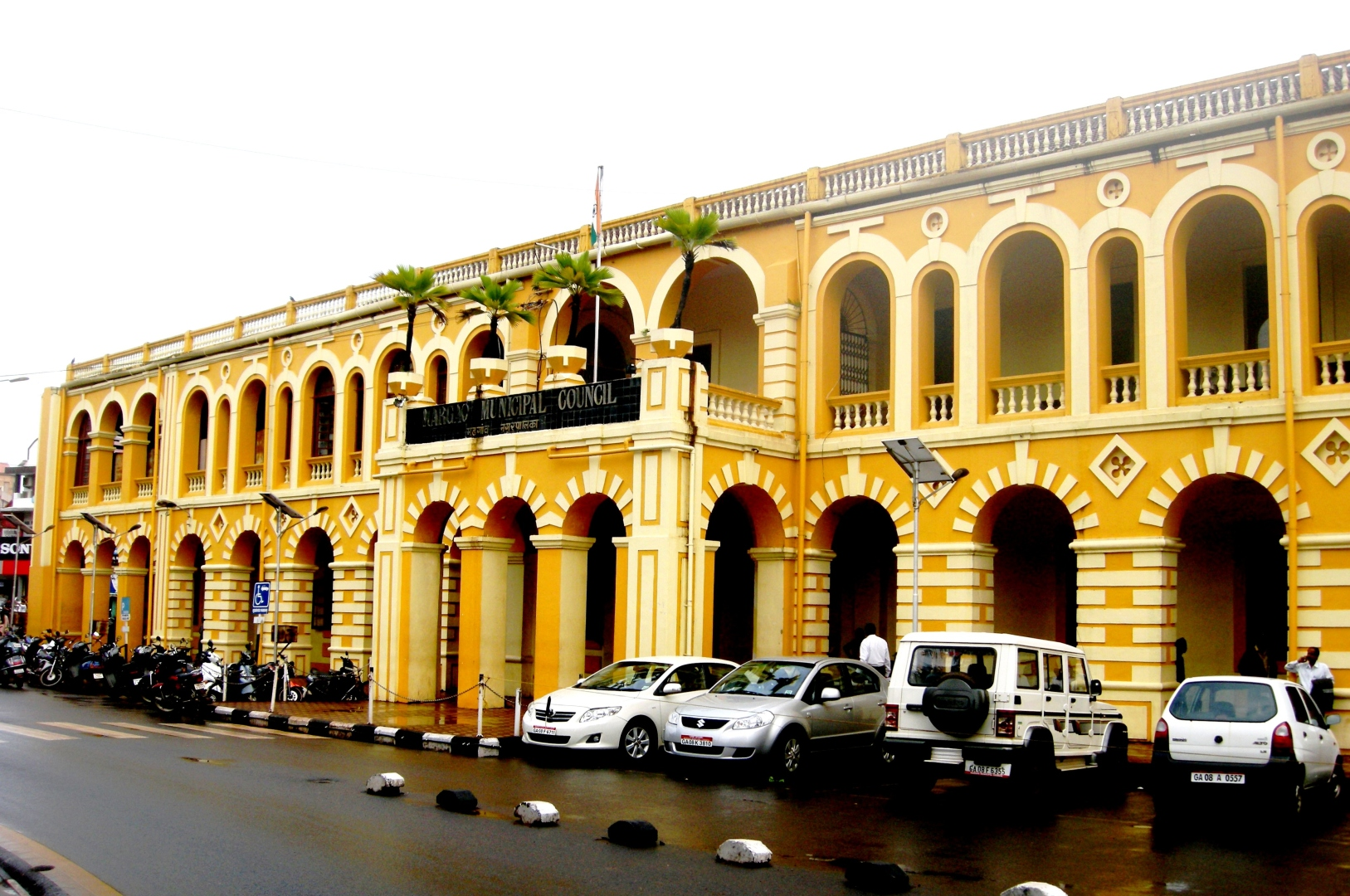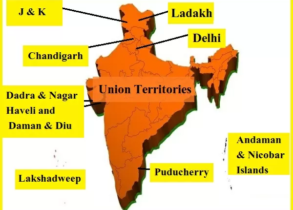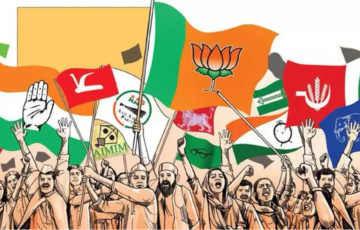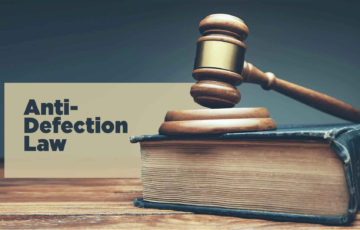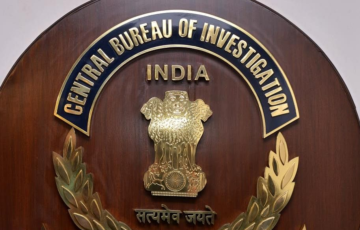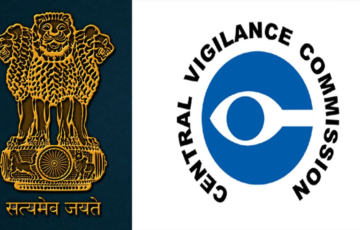MUNICIPALITIES
Introduction
- Urban local government in India refers to the governance of urban areas by elected representatives. These local governments are responsible for administering and managing various aspects of urban life, including infrastructure, public services, and development. The jurisdiction of an urban local government is typically limited to a specific urban area designated by the state government.
- There are eight types of urban local governments in India, each with its own distinct characteristics and functions:
- Municipal Corporation
- Municipality
- Notified Area Committee
- Town Area Committee
- Cantonment Board
- Township
- Port Trust
- Special Purpose Agency
- The constitutional framework for urban local governance was established through the 74th Constitutional Amendment Act of 1992. This amendment provided a constitutional basis for the creation, functioning, and empowerment of urban local bodies in India. It outlined various provisions related to urban governance, including the composition of urban local bodies, their functions, and their finances.
- At the central level, the subject of urban local government is managed by different ministries depending on the type of urban local body:
- Ministry of Housing and Urban Affairs: Responsible for most urban local bodies, including municipal corporations, municipalities, and other town-level urban governance bodies.
- Ministry of Defence: Deals with cantonment boards that oversee military areas.
- Ministry of Home Affairs: Manages urban local governance in union territories.
- The 74th Amendment Act has played a crucial role in decentralizing urban governance and empowering local authorities to address the unique needs and challenges of urban areas in India.
Evolution of Urban Bodies
- The development of urban local government institutions in India during British rule played a significant role in shaping the structure and functioning of local self-government in the country. Here are the key events and developments related to urban local government during this period:
- Establishment of the First Municipal Corporation: The first municipal corporation in India was established in Madras in 1687-88. This marked the beginning of organized urban governance in the country.
- Municipal Corporations in Bombay and Calcutta: Municipal corporations were also established in Bombay and Calcutta in 1726, following the Madras model. These municipal corporations were responsible for local administration, civic amenities, and public services in these cities.
- Lord Mayo’s Resolution (1870): Lord Mayo’s Resolution on financial decentralization in 1870 was a significant step towards the emergence of local self-government institutions. It aimed to decentralize financial powers and resources to local authorities.
- Lord Ripon’s Resolution (1882): Lord Ripon’s Resolution of 1882 is often referred to as the “Magna Carta” of municipal self-government in India. It laid the foundation for municipal reforms and emphasized the importance of local self-government. Lord Ripon is recognized as the “Father of Local Self-Government” in India.
- Royal Commission on Decentralization (1907-1909): In 1907, the Royal Commission on Decentralization was established, with Hobhouse as its chairman. The commission’s report, delivered in 1909, made recommendations to strengthen and empower local self-government institutions.
- Dyarchical Arrangement (Government of India Act, 1919): Under the Government of India Act, 1919, local self-government became a transferred subject under the supervision of a responsible Indian minister in the provinces. This arrangement allowed Indian ministers to oversee local governance issues.
- Cantonments Act (1924): The Central legislature established the Cantonments Act in 1924, which provided for the administration and governance of cantonment areas in India. This act allowed for local self-government in these areas.
- Government of India Act, 1935: Under the Government of India Act, 1935, which introduced the provincial autonomy plan, local self-government was considered a provincial issue. This act further defined the powers and functions of provincial governments in managing local administration.
- Introduction of the 65th Constitutional Amendment Bill (Nagarpalika Bill): The 65th Constitutional Amendment Bill, commonly known as the Nagarpalika Bill, was introduced in the Lok Sabha by the Rajiv Gandhi government in 1989. This bill aimed to provide constitutional status to municipal authorities and enhance their role and functions. It was passed by the Lok Sabha but faced opposition in the Rajya Sabha and was ultimately defeated in October 1989, leading to the bill’s lapse.
- Reintroduction of the Nagarpalika Bill (1990): In September 1990, the National Front government, led by V P Singh, reintroduced an updated version of the Nagarpalika Bill in the Lok Sabha. However, this bill did not pass and lapsed due to the dissolution of the Lok Sabha.
- Introduction of the Amended Municipalities Bill (1991): In September 1991, P V Narasimha Rao’s government introduced the amended Municipalities Bill in the Lok Sabha. This bill sought to address the constitutional status and functioning of municipal authorities in India.
- Enactment of the 74th Constitutional Amendment Act (1992): The amended Municipalities Bill was finally enacted as the 74th Constitutional Amendment Act of 1992 on June 1, 1993. This constitutional amendment marked a significant milestone in the empowerment of urban local bodies and municipal authorities in India.
- It provided a constitutional framework for the establishment and functioning of urban local governments, including municipal corporations and municipalities. The 74th Amendment Act also outlined the key roles and responsibilities of urban local bodies, devolution of powers, and mechanisms for financial autonomy and local self-governance in urban areas.
- The 74th Constitutional Amendment Act of 1992 is a pivotal legislation that strengthened and modernized urban local governance in India, giving municipal authorities a constitutional status and enhancing their capacity to address the needs and challenges of urban areas. It played a crucial role in decentralizing powers and responsibilities to urban local bodies, ultimately promoting local self-governance and urban development.
74th Constitutional Amendment Act of 1992
- The 74th Constitutional Amendment Act of 1992 made significant changes to the Indian Constitution, particularly in Part IX-A, which is titled ‘The Municipalities.’ This amendment aimed to strengthen and revitalize urban local governments, giving them constitutional status and making them an integral part of the Indian federal structure. Here are some key points about this important constitutional amendment:
- Addition of Part IX-A: The 74th Amendment Act added a new Part IX-A to the Indian Constitution, which deals specifically with municipalities. This part contains provisions from Articles 243-P to 243-ZG.
- Twelfth Schedule: Along with Part IX-A, the amendment introduced the Twelfth Schedule to the Constitution. This schedule comprises eighteen functional items that define the responsibilities and functions of municipalities. These items fall under Article 243-W.
- Constitutional Status for Municipalities: The act conferred constitutional status on municipalities, which means they became a constitutional entity and their powers and responsibilities were now protected by the Constitution. State governments are constitutionally obligated to adhere to the provisions of this act.
- Justiciable Provisions: By giving constitutional status to municipalities, the act placed them in the justiciable part of the Constitution. This means that municipalities have the right to approach the judiciary to ensure that their constitutional powers and functions are upheld.
- Strengthening Urban Governments: The primary objective of the 74th Amendment Act was to revitalize and strengthen urban local governments, enabling them to function effectively as units of local government. It sought to promote local self-governance and empower municipalities to address the complex challenges of urban areas.
- Decentralization of Powers: The amendment promoted the decentralization of powers, devolving responsibilities to urban local bodies. It aimed to ensure that municipalities could independently manage and govern their areas, addressing issues related to urban planning, development, and service delivery.
- Mandatory Implementation: State governments were required to implement the provisions of the act, ensuring that urban local governments were established and functioned as per the constitutional framework outlined in the amendment.
Salient Features
- The 74th Constitutional Amendment Act of 1992 provides for the constitution of various types of municipalities in every state, based on factors such as population, density, revenue generation, economic importance, and more. The three types of municipalities that can be established, as per the amendment:
- Nagar Panchayat for Transitional Areas: A nagar panchayat is established for transitional areas. These are areas that are in the process of urbanization, where municipal services are gradually being introduced as the population grows and urban characteristics develop. The creation of a nagar panchayat in such areas is intended to facilitate the transition from rural to urban governance.
- Municipal Council for Smaller Urban Areas: A municipal council is established for smaller urban areas. These areas typically have a relatively smaller population and are characterized by their size and administrative needs. Municipal councils are responsible for local governance in these smaller urban areas.
- Municipal Corporation for Larger Urban Areas: A municipal corporation is established for larger urban areas. These areas have a substantial population, high population density, and significant revenue generation for local administration. Municipal corporations are equipped to manage the complex and diverse urban needs of these larger areas.
- Exception: Industrial Township: The act also makes an exception for areas where municipal services are being provided by an industrial establishment. In such cases, the governor of the state may specify that area as an industrial township. An industrial township is governed by the rules and regulations established by the industrial establishment, and a separate municipality may not be constituted in that area.
- This classification ensures that municipalities are established based on the specific characteristics and needs of each area, allowing for effective and tailored local governance in urban regions across the country.
The decision to classify an area as a transitional area, a smaller urban area, or a larger urban area is made by the governor, taking into account various factors, including:
|
Composition
- The composition of municipalities in India, as mandated by the 74th Constitutional Amendment Act of 1992, ensures that they are directly elected bodies representing urban local governance. The key components of the composition are as follows:
- Directly Elected Members: All members of a municipality are to be elected directly by the people residing in the municipal area. In this regard, the municipal area is divided into territorial constituencies known as “wards.”
- Chairperson Election: The manner of electing the chairperson of the municipality is left to the discretion of the state legislature. States can decide the method for selecting the chairperson, which may vary from one state to another.
- Representation of Certain Persons: The state legislature is allowed to provide for the representation of specific individuals in the municipality, including:
- Persons with Special Knowledge or Experience: Individuals who possess special knowledge or experience in municipal administration may be represented in the municipality. However, they are not granted the right to vote during municipal meetings.
- Members of the Lok Sabha and State Legislative Assembly: Members of the Lok Sabha and the state legislative assembly representing constituencies that wholly or partly comprise the municipal area may be given representation.
- Members of the Rajya Sabha and State Legislative Council: Members of the Rajya Sabha and the state legislative council who are registered as electors within the municipal area may also be provided representation.
- Chairpersons of Committees (Excluding Wards Committees): The chairpersons of various committees (other than wards committees) can be made members of the municipality. These committees serve various functions and may include representatives from different aspects of local governance.
Wards Committees:
- For municipalities with a population of three lakh or more, there shall be constituted wards committees. These committees consist of one or more wards within the municipal area. The state legislature has the authority to define the composition and territorial area of the wards committee, as well as the process for filling seats within it.
Other Committees:
- In addition to wards committees, the state legislature has the discretion to create additional committees for various purposes related to local governance. These committees may serve specific functions or address particular local issues. The chairpersons of such committees may also be granted membership in the municipality.
- This multi-tiered approach to representation in municipalities allows for a diverse and inclusive governance structure that caters to the specific needs and characteristics of urban areas, while still ensuring that elected representatives have a direct connection with the local population.
- The 74th Constitutional Amendment Act of 1992 introduced provisions that address various aspects of urban local governance in India, including reservation of seats, duration of municipalities, and disqualifications. Here are the key points related to these provisions:
Reservation of Seats
- Scheduled Castes and Scheduled Tribes: The Act mandates the reservation of seats in every municipality for the Scheduled Castes (SCs) and the Scheduled Tribes (STs). The number of reserved seats for SCs and STs should be in proportion to their population in the municipal area.
- Reservation for Women: The Act requires that not less than one-third of the total number of seats in every municipality be reserved for women. This reservation includes seats for women belonging to SCs and STs.
- State Legislature’s Authority: The state legislature has the power to determine the manner of seat reservations for SCs, STs, and women. Additionally, the state legislature can provide for the reservation of seats or chairperson positions in favor of backward classes.
- Duration of Reservation: The Act specifies that the reservation of seats and chairperson positions for SCs and STs in municipalities will cease to have effect after the period specified in Article 334 of the Indian Constitution. Presently, this period is set at seventy years, meaning it would last until 2020.
Duration of Municipalities
- Five-Year Term: Every municipality, once constituted, is granted a five-year term of office.
- Premature Dissolution: A municipality can be dissolved before the completion of its five-year term. In such cases, fresh elections to constitute a new municipality should be held either before the original term expires or, in the case of dissolution, within six months from the date of dissolution. If the remaining term is less than six months, there is no need to hold new elections for the remaining period.
- Partial Term: A municipality reconstituted after premature dissolution does not enjoy a full five-year term but serves for the remainder of the period for which the dissolved municipality would have continued.
- Dissolution Procedure: Before a municipality is dissolved, it must be given a reasonable opportunity to be heard. The Act prohibits any amendment to existing laws that would lead to the dissolution of a municipality before its five-year term expires.
Disqualifications
- A person is disqualified from being chosen as or being a member of a municipality if they are disqualified under any law currently in force for state legislature elections or under a law enacted by the state legislature.
- There is no disqualification based on age for persons who have attained the age of 21 years, even if they are less than 25 years old.
- All matters related to disqualifications are to be referred to the authority determined by the state legislature.
State Election Commission
- Supervision of Municipal Elections: The superintendence, direction, and control of the preparation of electoral rolls and the conduct of all elections to municipalities are vested in the State Election Commission.
- Matters Relating to Elections: The state legislature has the authority to make provisions regarding all matters related to elections to municipalities.
Powers and Functions of Municipalities
- Empowering Municipalities: The state legislature may endow municipalities with the necessary powers and authority to function effectively as institutions of self-government.
- Devolution of Powers and Responsibilities: The state legislature can establish a scheme for the devolution of powers and responsibilities to municipalities at the appropriate level, particularly in areas such as:
- Preparation of plans for economic development and social justice.
- Implementation of schemes related to economic development and social justice, including those covering the eighteen matters listed in the Twelfth Schedule of the Indian Constitution.
Finances
- Taxation Powers: The state legislature may authorize municipalities to levy, collect, and appropriate taxes, duties, tolls, and fees within their jurisdiction.
- Assignment of Taxes: Municipalities can be assigned taxes, duties, tolls, and fees levied and collected by the state government.
- Grants-in-Aid: The state legislature is empowered to provide grants-in-aid to municipalities from the consolidated fund of the state.
- Funds for Municipalities: Provisions can be made for the establishment of funds to account for all financial transactions and resources of municipalities.
| Finance Commission for Panchayats and Municipalities
Constitution of Finance Commissions: The Act mandates the constitution of separate finance commissions for Panchayats (rural local bodies) and municipalities (urban local bodies) at the state level. Review of Financial Position: The finance commission for municipalities is responsible for reviewing the financial position of municipalities every five years. This review assesses the fiscal health of urban local bodies. Recommendations of Finance Commission for Municipalities: Distribution of Tax Proceeds: The finance commission for municipalities makes recommendations to the governor regarding the principles that should govern the distribution of the net proceeds of taxes, duties, tolls, and fees levied by the state between the state government and municipalities. It also suggests the allocation of shares among municipalities at various levels. Assignment of Taxes: The commission recommends the determination of the specific taxes, duties, tolls, and fees that may be assigned to municipalities. This empowers urban local bodies to collect certain taxes directly. Grants-in-Aid: The finance commission recommends grants-in-aid to municipalities from the consolidated fund of the state. These grants provide additional financial support to municipalities for their various functions and responsibilities. Measures to Improve Financial Position: The commission provides recommendations on measures needed to improve the financial position of municipalities. This can include steps to enhance revenue generation or fiscal management at the urban local body level. Reporting to State Legislature: The recommendations of the finance commission for municipalities, along with an action-taken report, are presented by the governor before the state legislature. This ensures transparency and accountability in the financial arrangements for urban local bodies. Central Finance Commission and Municipal Resources: The central finance commission, at the national level, also plays a role. It suggests measures to augment the consolidated fund of a state to supplement the resources of municipalities within that state. These suggestions are based on the recommendations made by the state’s finance commission for municipalities. |
Audit of Accounts:
- State Legislature’s Authority: The state legislature has the authority to make provisions regarding the maintenance of accounts by municipalities and the auditing of such accounts. This ensures that the financial affairs of municipalities are appropriately managed and reviewed.
Application to Union Territories:
- Applicability to Union Territories: The provisions of this constitutional amendment related to municipalities are applicable to Union territories. However, the President of India has the discretion to direct that these provisions apply to a Union territory subject to specific exceptions and modifications. This allows for flexibility in implementing these provisions in different Union territories.
Exempted Areas:
- Scheduled and Tribal Areas: The 74th Constitutional Amendment Act does not apply to the scheduled areas and tribal areas within states. This exemption is intended to respect the distinct governance structures and traditions in these areas.
- Darjeeling Gorkha Hill Council: The Act also does not affect the functions and powers of the Darjeeling Gorkha Hill Council in the state of West Bengal. This exception recognizes the special administrative arrangement in the Darjeeling region.
- Extension by Parliament: Although the Act exempts scheduled and tribal areas, the Parliament of India has the authority to extend the provisions of this constitutional amendment to these areas. This extension can include specific exceptions and modifications tailored to the unique needs and circumstances of these regions
District Planning Committee:
- Constitution: Every state is required to constitute a District Planning Committee (DPC) at the district level. The primary purpose of the DPC is to consolidate plans prepared by Panchayats and Municipalities within the district and to draft a comprehensive development plan for the entire district.
- Composition: The state legislature is empowered to determine the composition of these committees, including the manner of electing their members.
- Functions: DPCs are responsible for district planning and are tasked with considering matters of common interest between Panchayats and Municipalities, such as spatial planning, resource sharing, infrastructure development, and environmental conservation. These committees also consult institutions and organizations as specified by the Governor.
- Representation: Four-fifths of the members of a DPC are elected by elected members of district Panchayats and Municipalities from amongst themselves. Representation in the DPC is determined based on the ratio of rural and urban populations in the district.
- Role of Chairperson: The Chairperson of the DPC forwards the district development plan to the state government for consideration.
Metropolitan Planning Committee:
- Constitution: Every metropolitan area is required to have a Metropolitan Planning Committee (MPC) responsible for preparing a draft development plan for the metropolitan area. The aim is to coordinate development activities in these larger urban regions.
- Composition: The state legislature determines the composition of MPCs and the manner of electing their members. The representation in MPCs includes members from the Central government, state government, and other organizations.
- Functions: MPCs play a crucial role in planning and coordinating activities within the metropolitan area. They consider the plans prepared by Municipalities and Panchayats in the area and address matters of common interest, including spatial planning, resource sharing, infrastructure development, and environmental conservation.
- Representation: Two-thirds of the members in an MPC are elected by elected members of Municipalities and Panchayat chairpersons within the metropolitan area. Representation in MPCs is based on the population ratio between municipalities and Panchayats in the area.
- Role of Chairperson: The Chairperson of the MPC submits the development plan to the state government for further action.
Continuance of Existing Laws and Municipalities
- The 74th Constitutional Amendment Act, which came into effect on June 1, 1993, extends the validity of state laws related to municipalities for a year. This allows states to adopt a new system of municipalities, while existing municipalities continue to function until their term expires, unless dissolved earlier by the state legislature.
Bar to Interference by Courts in Electoral Matters
- The act prohibits courts from interfering in municipal electoral matters, preventing them from questioning the validity of laws relating to constituency delimitation or seat allocation. It also stipulates that no election to a municipality can be challenged in court, except through an election petition specified by the state legislature.
| Twelfth Schedule of the Indian Constitution
The Twelfth Schedule of the Indian Constitution lists 18 functional items that pertain to municipal governance. It was added to the Constitution through the 74th Constitutional Amendment Act of 1992. These items outline the specific responsibilities and functions of urban local bodies (municipalities) in India. Here are the 18 functional items in the Twelfth Schedule:
These functional items empower urban local bodies to take charge of various aspects of urban governance, promoting sustainable development, and improving the quality of life in urban areas. Municipalities play a significant role in the planning and development of cities and towns, ensuring the well-being of their residents. |
Types of Urban Government
Municipal Corporation
- Scope: Municipal corporations are established for the administration of large cities like Delhi, Mumbai, Kolkata, Hyderabad, Bangalore, and others. They are meant for metropolises and big urban areas.
- Establishment: They are established in states by the respective state legislatures’ acts and in union territories by acts of the Parliament of India.
- Authorities:
- Council: The council is the deliberative and legislative wing of the corporation. It includes directly elected councilors and a few nominated members with experience in municipal administration. The composition, including reservation of seats for specific categories, is governed by the 74th Constitutional Amendment Act.
- Mayor: The Mayor, elected by the council, is the formal head of the corporation. The Mayor’s role is largely ceremonial and includes presiding over council meetings.
- Deputy Mayor: The Deputy Mayor assists the Mayor and is elected for a one-year renewable term in most states.
- Standing Committees: These committees are created to streamline the council’s functioning, dealing with various aspects such as public works, education, health, taxation, and finance.
- Municipal Commissioner: The commissioner, often an Indian Administrative Service (IAS) officer, is the chief executive authority responsible for implementing the council’s decisions.
Municipality:
- Scope: Municipalities are established for the administration of towns and smaller cities. They serve urban areas of moderate size.
- Establishment: Similar to municipal corporations, municipalities are established through state legislature acts in states and through acts of the Parliament of India in union territories. They are also known by various names like municipal council, municipal committee, municipal board, borough municipality, city municipality, and others.
- Authorities:
- Council: The council is the decision-making and legislative body, consisting of directly elected councilors.
- President/Chairman: The President or Chairman, elected by the council, plays a more significant role compared to the Mayor of a municipal corporation. They preside over council meetings and hold executive powers.
- Vice-President/Vice-Chairman: The Vice-President or Vice-Chairman assists the President and participates in the administration.
- Standing Committees: Similar to municipal corporations, standing committees are formed to manage various aspects of municipal governance.
- Chief Executive Officer/Chief Municipal Officer: Appointed by the state government, the Chief Executive Officer handles the day-to-day administration of the municipality.
Notified Area Committee
- Scope: Notified Area Committees are created for the administration of specific areas, which include two types of locations:
- Fast developing towns due to industrialization.
- Towns that do not meet all the conditions required for the establishment of a full-fledged municipality but are considered important by the state government.
- Establishment: These committees are established through a government notification published in the official government gazette. They operate under the provisions of the State Municipal Act, with specific sections of the act being notified for their application.
- Powers: Notified Area Committees have powers similar to those of municipalities within their designated areas. They are entrusted with various civic functions, local governance, and administration.
Town Area Committee:
- Scope: Town Area Committees are established for the administration of small towns. They are semi-municipal authorities responsible for a limited range of civic functions and services, including drainage, road maintenance, street lighting, and conservancy.
- Establishment: Town Area Committees are created through a separate act of the state legislature. The act defines their composition, functions, and other operational aspects.
- Composition: Town Area Committees may have different compositions, depending on the specific act that establishes them. They can be:
- Wholly elected: All members are elected by the local population.
- Wholly nominated: All members, including the chairman, are appointed by the state government.
- Partly elected and partly nominated: A combination of elected and nominated members as per the provisions of the establishing act.
Township
- Scope: Townships are established by large public enterprises primarily to provide civic amenities and services to their employees and workers residing in housing colonies near their facilities, such as industrial plants.
- Administration: Town administrators are appointed to manage the administration of townships. These administrators are typically responsible for overseeing civic amenities and services within the township. Town administrators work alongside engineers and other technical and non-technical staff.
- Elected Members: Townships do not have elected members, and their governance structure is an extension of the bureaucratic setup of the enterprises.
Port Trust
- Scope: Port trusts are established in port areas like Mumbai, Kolkata, Chennai, etc., with two primary objectives:
- Managing and protecting the ports.
- Providing civic amenities and services to the surrounding areas.
- Establishment: Port trusts are created by acts of Parliament.
- Composition: Port trusts consist of both elected and nominated members. The chairman of a port trust is typically an official.
- Powers and Functions: Port trusts have civic functions similar to those of municipalities, including providing essential services to the port areas.
Special Purpose Agency
- Scope: Special purpose agencies are established by states to undertake specific activities or functions that are usually associated with municipal corporations, municipalities, or other urban local governments.
- Types: These agencies, often known as single-purpose, uni-purpose, or special purpose agencies, are designated to serve distinct functions or areas. Some examples include town improvement trusts, urban development authorities, water supply and sewerage boards, housing boards, pollution control boards, electricity supply boards, and city transport boards.
- Establishment: Functional local bodies are established as statutory bodies through state legislature acts or as departments via executive resolutions.
- Autonomy: These agencies operate autonomously, independently handling the functions assigned to them without being subordinate to local municipal bodies. They are specialized entities designed to focus on specific urban functions.
Cantonment Board
- A Cantonment Board is a distinct form of urban local body in India, primarily responsible for municipal administration within cantonment areas. Here are some key features and details about Cantonment Boards:
- Establishment and Legal Framework:
- Cantonment Boards are established for the civilian population residing within cantonment areas.
- They are governed by the Cantonments Act of 2006, a legislation enacted by the Central government.
- The administrative control of Cantonment Boards falls under the defense ministry of the Central government.
- Composition of Cantonment Board:
- A Cantonment Board consists of both elected and nominated members.
- The military officer commanding the station serves as the ex-officio president of the board and presides over its meetings.
- The vice-president of the board is elected by the elected members from amongst themselves for a term of five years.
- Functions and Responsibilities:
- Cantonment Boards perform functions similar to municipalities, covering a range of civic and administrative responsibilities.
- These functions are categorized into obligatory functions and discretionary functions.
- Obligatory functions include basic civic services, while discretionary functions encompass various developmental activities.
- Cantonment Boards derive income from both tax revenue and non-tax revenue.
- Executive Officer:
- The Executive Officer of the Cantonment Board is appointed by the President of India.
- The Executive Officer is responsible for implementing the resolutions and decisions of the board and its committees.
- The Executive Officer typically belongs to the central cadre established for this purpose.
Sources of Revenues
- Urban local bodies in India derive their income from various sources to fund their functions and development projects. The five main sources of income for urban local bodies are as follows:
- Tax Revenue: This source includes revenue generated from various local taxes. Some of the common local taxes are:
- Property tax
- Entertainment tax
- Taxes on advertisements
- Professional tax
- Water tax
- Tax on animals
- Lighting tax
- Pilgrim tax
- Market tax
- Toll on new bridges
- Cesses (e.g., library cess, education cess, beggary cess)
- Octroi (entry taxes on goods, which has been abolished in most states)
- Among these, property tax is typically the most significant source of tax revenue for urban local bodies.
- Non-Tax Revenue: Non-tax revenue sources include income generated from various fees and fines, rent on municipal properties, royalty, profits, dividends, interest, user charges, and miscellaneous receipts. User charges, such as those for water supply, sanitation, and sewerage services, are a crucial component of non-tax revenue.
- Grants: Urban local bodies receive grants from both the Central and State Governments to support various development programs, infrastructure projects, urban reform initiatives, and other initiatives. These grants are crucial for the financial health of local bodies.
- Devolution: Devolution refers to the transfer of funds from the state government to urban local bodies. These transfers are typically made based on the recommendations of the state finance commission, which ensures a fair distribution of resources to local bodies.
- Loans: Urban local bodies may raise loans from the state government or financial institutions to meet their capital expenditure needs. However, borrowing from financial institutions or other bodies typically requires approval from the state government. Loans are an important source of funding for long-term projects and infrastructure development.
| The latest data on municipal revenue in India is from the year 2021-22. According to the Ministry of Finance, the total municipal revenue in India in 2021-22 was Rs. 2.75 lakh crore. This includes both own revenue and grants from the state and central governments.
The following table shows the share of different sources of municipal revenue in India in 2021-22:
|
Central Council of Local Government
- The Central Council of Local Government is an advisory body established under Article 263 of the Indian Constitution. It was originally known as the Central Council of Local Self-Government but was later renamed to Central Council of Local Government in the 1980s. This council primarily deals with matters related to urban local government.
- Key features and functions of the Central Council of Local Government are as follows:
- Composition: The Council is composed of members representing both the central and state governments. It includes the Minister for Urban Development in the Government of India and the ministers responsible for local self-government in various states. The Union minister serves as the Chairman of the Council.
- Advisory Role: The Council serves as an advisory body and is responsible for offering advice and recommendations on various policy matters related to local government, especially urban local government. It plays a pivotal role in coordinating between the central and state governments on these matters.
- Policy Recommendations: The Council is involved in the consideration and recommendation of policy matters relevant to urban local government. It can make proposals for legislation, suggesting changes or amendments in the existing laws governing local government.
- Cooperation and Coordination: One of its functions is to examine the potential for cooperation between the central and state governments on issues related to urban local government. This cooperation aims to enhance the efficiency and effectiveness of local government initiatives.
- Program of Action: The Council is responsible for drawing up a common program of action, which includes strategies and plans to promote and improve urban local governance.
- Financial Assistance: The Council can recommend the allocation of Central financial assistance to urban local bodies to support their development initiatives. These recommendations play a significant role in funding local government projects and programs.
- Monitoring and Review: The Council reviews the work undertaken by local bodies with the financial assistance provided by the central government. This monitoring ensures that the allocated funds are effectively utilized for urban development.
UPSC PREVIOUS YEAR QUESTIONS
1. Consider the following statements: (2011)
In India, a Metropolitan Planning Committee
1. Is constituted under the provisions of the constitution of India.
2. Prepares the draft development plans for the metropolitan area.
3. Has the sole responsibility for implementing Government sponsored schemes in the metropolitan area.
Which of the statements given above is/are correct?
(a) 1 and 2 only
(b) 2 only
(c) 1 and 3 only
(d) 1, 2 and 3

